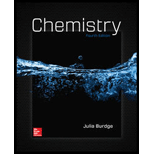
Consider the reaction:
Suppose that at a particular moment during the reaction molecular hydrogen is reacting at the rate of
Interpretation:
The rate at which ammonia reacts and at which nitrogen reacts with given rate of reaction of molecular hydrogen is to be calculated.
Concept introduction:
The branch of chemistry thatdeals with the relative rates of the chemical reactions and the factors affecting the rates of reactions is known as chemical kinetics.
The rate of reaction is the measurement of concentration change of reactants within a period of time.
For the reaction:
If three moles of B are reacted then its rate expression will be divided by 3and if two moles of C are formed then its rate expression will be divided by 2
The rate expression of reactant has negative sign because they are consumed in reaction.
The rate expression of product has positive sign because they are formed in reaction.
Rate is always a positive quantity, the concentration of reactant decreases, a minus sign is required in rate expression to make it positive.
The rate expression for the reaction is given by:
Answer to Problem 8QP
Solution: (a)
(b)
Explanation of Solution
a) Rate of formation of ammonia
The given reaction is as follows:
Molecular hydrogen reacts at the rate of
The rate expression for the reaction is given as follows:
The rate at which ammonia is formed is calculated by the expression as follows:
Substitute the value of rate at which molecular hydrogen reacts in the above equation.
The rate at which ammonia is formed is
Given information:
The given reaction is as follows:
Molecular hydrogen reacts at the rate of
b) The rate at molecular nitrogen reacts.
The rate expression for the reaction is given as follows:
The rate at whichnitrogen reacts is calculated by the expression as follows:
Substitute the value of rate at which molecular hydrogen reacts in the above equation,
The molecular nitrogen reacts at the rate of
Want to see more full solutions like this?
Chapter 14 Solutions
Chemistry
- Put the following carbon radicals in order of increasing stability.arrow_forwardDraw the major organic product for each of the following reactions (pay attention to stereochemistry).arrow_forwardThere are 2 reactions (that you know of) to achieve the following transformation: One reaction is favored over the other because it avoids a competing reaction. A. Draw the favored reaction scheme (not the mechanism), be sure to include all necessary reagents. B. Draw the reaction scheme that is not favored and include all the possible products.arrow_forward
- Both carbocations and carbon-radicals have trigonal planar geometry. True or Falsearrow_forwardTeflon (polytetrafluoroethene) is prepared via the radial polymerization of tetrafluoroethene. What other reaction conditions (reagent, etc.) are needed to accomplish this? A. NBS, Light B. Heat, Cl2 C. Peroxide, Heat D. H2SO4, H2O, Heatarrow_forwardWhich of the following compounds can be reacted with ethene to prepare 1,1- dichlorocyclopropane? A. CCl4 B. CCl2 C. CHCl3 D. CH2Cl2arrow_forward
- CI 4. How are the products of the following reaction related? (assuming we can control the chlorination as given by the reaction) C Cl2, light A. Enantiomers B. Constitutional isomers C. Regioisomers D. Diastereomers C +arrow_forwardVinyl and allyl radicals are equally stable due to resonance stabilization True OR Falsearrow_forwardAll of the following are true of Markovnikov’s rule EXCEPT A. The nucleophile adds to the most substituted carbon B. The more stable carbocation is formed in the transition state C. The electrophile adds to the carbon that has the most hydrogens D. There are no exceptions to this rulearrow_forward
 Chemistry: Principles and ReactionsChemistryISBN:9781305079373Author:William L. Masterton, Cecile N. HurleyPublisher:Cengage Learning
Chemistry: Principles and ReactionsChemistryISBN:9781305079373Author:William L. Masterton, Cecile N. HurleyPublisher:Cengage Learning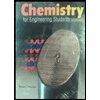 Chemistry for Engineering StudentsChemistryISBN:9781337398909Author:Lawrence S. Brown, Tom HolmePublisher:Cengage Learning
Chemistry for Engineering StudentsChemistryISBN:9781337398909Author:Lawrence S. Brown, Tom HolmePublisher:Cengage Learning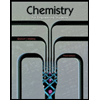 Chemistry for Engineering StudentsChemistryISBN:9781285199023Author:Lawrence S. Brown, Tom HolmePublisher:Cengage Learning
Chemistry for Engineering StudentsChemistryISBN:9781285199023Author:Lawrence S. Brown, Tom HolmePublisher:Cengage Learning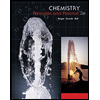 Chemistry: Principles and PracticeChemistryISBN:9780534420123Author:Daniel L. Reger, Scott R. Goode, David W. Ball, Edward MercerPublisher:Cengage LearningChemistry: Matter and ChangeChemistryISBN:9780078746376Author:Dinah Zike, Laurel Dingrando, Nicholas Hainen, Cheryl WistromPublisher:Glencoe/McGraw-Hill School Pub Co
Chemistry: Principles and PracticeChemistryISBN:9780534420123Author:Daniel L. Reger, Scott R. Goode, David W. Ball, Edward MercerPublisher:Cengage LearningChemistry: Matter and ChangeChemistryISBN:9780078746376Author:Dinah Zike, Laurel Dingrando, Nicholas Hainen, Cheryl WistromPublisher:Glencoe/McGraw-Hill School Pub Co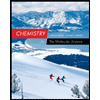 Chemistry: The Molecular ScienceChemistryISBN:9781285199047Author:John W. Moore, Conrad L. StanitskiPublisher:Cengage Learning
Chemistry: The Molecular ScienceChemistryISBN:9781285199047Author:John W. Moore, Conrad L. StanitskiPublisher:Cengage Learning





